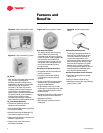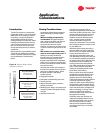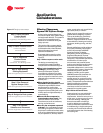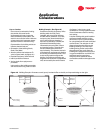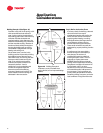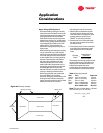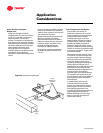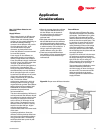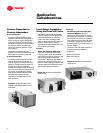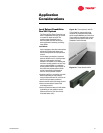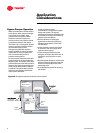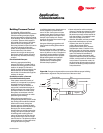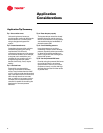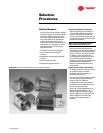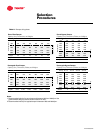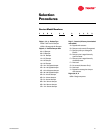
20 VAV-PRC003-EN
Application
Considerations
Local Reheat Capabilities
Using VariTrane VAV Units
VariTrane pressure independent VAV
units are a simple way to upgrade the
zone VAV capabilities on a VariTrac
system. The main advantage is the
ability to integrate units with either hot
water or electric reheat. Here are
application examples where VAV units
may enhance your design:
Example 1
Series fan-powered VAV units
work well in conference rooms and
training rooms. Series fan-powered
units supply constant air volume to the
space. This provides excellent air
movement in the space regardless of
the internal load requirements. Hot
water or electric heat are integral to the
unit and optionally available to temper
the air at partial load conditions.
Figure 24. Series fan-powered VAV
terminal unit
Example 2
Parallel fan powered units with
local heat applied help solve
problems in difficult areas to control
like lobbies and vestibules. The parallel
fan provides local heat to an individual
zone without relying on the main HVAC
unit’s heat or supply fan. This allows
greater flexibility for mixing zones on a
VariTrac system.
VariTrane units with integral electric or
hot water heat are available as:
• single-duct
• parallel fan-powered
• series fan-powered
Figure 23. Single-duct VAV unit is
available with integral electric or hot
water heat
Figure 25. Parallel fan-powered VAV
terminal unit
Pressure Dependent vs.
Pressure Independent
Pressure-Dependent
A pressure-dependent VAV control
sequence uses the space temperature
sensor to directly control the position
of the zone damper. The actual airflow
delivered to the space is a by-product of
this damper position and the static
pressure in the duct upstream of the
zone damper.
Ventilation air is a fixed-damper
position and must be measured and set
during the commissioning process.
Pressure-Independent
A pressure-independent VAV control
scheme directly controls the actual
volume of primary air that flows to the
space. An airflow-measuring device in
the VAV terminal unit makes this
possible. The position of the modulating
device is not directly controlled and is a
by-product of regulating the airflow
through the unit. Because the airflow
delivered to the space is directly
controlled, it is independent of inlet
static pressure.



